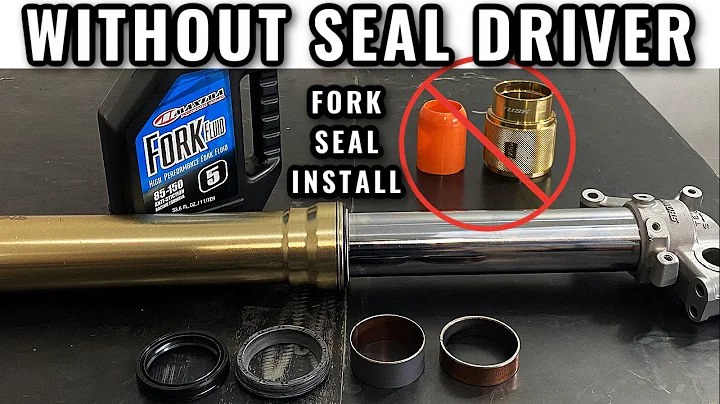Unlocking the Secrets of Muscle Tissues and Contraction Process
Table of Contents
- Introduction
- Types of Muscle Tissue
- 2.1 Cardiac Muscle Tissue
- 2.2 Smooth Muscle Tissue
- 2.3 Skeletal Muscle Tissue
- Structure and Function of Muscle Tissue
- 3.1 Muscle Fibers
- 3.2 Excitability and Contractility
- 3.3 Extensibility and Elasticity
- Naming and Arrangement of Skeletal Muscles
- 4.1 Location and Shape
- 4.2 Origin and Insertion
- 4.3 Agonist and Antagonist Muscles
- The Sliding-Filament Model of Muscle Contraction
- 5.1 Actin and Myosin
- 5.2 Sarcomeres and Z Lines
- 5.3 Muscle Contraction Process
- 5.4 Regulation of Muscle Contraction
- Conclusion
Introduction
Muscles are an integral part of the human body, responsible for various movements and functions. While many of us are familiar with muscles like biceps and triceps, there is much more to muscles than what meets the eye. In this article, we will explore the different types of muscle tissue, their structure and function, the naming and arrangement of skeletal muscles, and the fascinating process of muscle contraction. So, let's dive into the world of muscles and discover the marvels of our muscular system.
Types of Muscle Tissue
2.1 Cardiac Muscle Tissue
Cardiac muscle tissue, as the name suggests, is found in the heart. It consists of branched and striated muscle fibers, each containing one nucleus. Intercalated discs play a crucial role in facilitating organized, wave-like contractions of cardiac muscle tissue. Unlike skeletal muscles, cardiac muscle contraction is involuntary and not consciously controlled.
2.2 Smooth Muscle Tissue
Smooth muscle tissue is characterized by its smooth appearance, lacking striations or stripes. The fibers are spindle-shaped with a single nucleus, and they can be found in various organs like the digestive system, arteries and veins, bladder, and even the eyes for changing the iris size. Similar to cardiac muscles, smooth muscles are also involuntary and not under conscious control.
2.3 Skeletal Muscle Tissue
Skeletal muscle tissue is what we commonly associate with muscles like biceps or triceps. It is attached to bones or the skin, allowing voluntary control over its movements. Skeletal muscle fibers are long cylinders with multiple nuclei and a striated appearance. The ability to consciously control skeletal muscles enables us to perform actions like picking up objects or moving our limbs.
Structure and Function of Muscle Tissue
3.1 Muscle Fibers
Muscle tissue is composed of individual muscle fibers, which are the cells responsible for contraction. These fibers have a unique structure that aids in their function. Within each muscle fiber, multiple myofibrils can be found. Each myofibril consists of repeating sections called sarcomeres, contributing to the striated appearance of skeletal muscles.
3.2 Excitability and Contractility
All muscle tissue shares some common characteristics. Muscles can stretch or extend (extensibility) and retract back to their original length (elasticity). They also possess excitability, meaning they can be stimulated and undergo electrical changes, enabling them to send action potentials. Lastly, muscles have the remarkable ability to contract or shorten, allowing for movement and various physiological processes (contractility).
3.3 Extensibility and Elasticity
Muscle tissue also has the remarkable ability to contract or shorten. This contraction occurs due to the sliding-filament model of muscle contraction, which we will explore in detail later. When a muscle contracts, the sarcomeres within the muscle fibers shorten, leading to overall muscle contraction.
Naming and Arrangement of Skeletal Muscles
4.1 Location and Shape
Skeletal muscles are often named based on their location or shape. Many muscle names derive from Latin or Greek root words, providing insights into their anatomical characteristics. For example, the rectus femoris is a muscle located in the thigh, while rectus abdominis is a muscle found in the abdomen. Deltoids, named after the Greek letter delta, are triangular-shaped muscles.
4.2 Origin and Insertion
Each skeletal muscle has an origin and insertion point. The origin refers to the part of the muscle that attaches to a fixed part of the bone, while the insertion refers to the part that attaches to the bone that undergoes movement. In complex movements, multiple muscles can be involved, with the prime mover (agonist) being the main muscle responsible for the action, and the antagonists providing the opposing action to maintain stability.
4.3 Agonist and Antagonist Muscles
In muscle movements, agonist muscles are the primary movers responsible for producing the desired action. Antagonist muscles, on the other hand, work in opposition to the agonist muscles, helping to control the movement and maintain proper position and balance.
The Sliding-Filament Model of Muscle Contraction
5.1 Actin and Myosin
The sliding-filament model of muscle contraction is a fundamental concept in understanding how muscles work. It involves two key proteins: actin and myosin. Actin makes up the thin filaments, while myosin forms the thick filaments. These proteins play a critical role in the contraction process.
5.2 Sarcomeres and Z Lines
Sarcomeres, the functional units of muscle fibers, are sections within the myofibrils where muscle contraction occurs. Z lines mark the boundaries between sarcomeres and serve as attachment points for the thin filaments.
5.3 Muscle Contraction Process
During muscle contraction, the sarcomeres within the muscle fibers undergo changes that result in the shortening of the muscle. The thin filaments, made of actin, are pulled towards the center of the sarcomere by the thick filaments, composed of myosin. This sliding of filaments causes an overlap between them, resulting in the movement and contraction of the muscle.
5.4 Regulation of Muscle Contraction
Muscle contraction is a highly regulated process. It involves the regulation of myosin heads, which bind to actin and initiate the contraction process. Tropomyosin, a regulatory protein, blocks the myosin bonding sites on actin in its resting state. The presence of calcium ions triggers a conformational change in the troponin complex, moving tropomyosin and exposing the myosin binding sites. This allows the myosin heads to bind, leading to muscle contraction.
Conclusion
Muscles are remarkable structures that play a vital role in our body's movement and functioning. Understanding the different types of muscle tissue, their structure, and the process of muscle contraction provides insights into the complexity and beauty of our muscular system. Next time we flex our muscles or perform any voluntary movement, we can appreciate the intricate interactions happening at the cellular level within our skeletal muscles.
Highlights
- Muscles are more than just what meets the eye; they are complex tissues with different types and functions.
- Cardiac muscle, smooth muscle, and skeletal muscle are the three main types of muscle tissue.
- Muscle fibers have unique characteristics that enable them to stretch, contract, and respond to electrical signals.
- Skeletal muscles are named based on their location, shape, and function.
- The sliding-filament model explains how muscles contract through the interaction of actin and myosin filaments.
- Muscle contraction is regulated by proteins like tropomyosin and troponin, with calcium ions playing a crucial role.
- The marvel of our muscular system lies in the intricate processes happening at the cellular level.
FAQ
Q: What is the function of cardiac muscle tissue?
A: Cardiac muscle tissue is responsible for the contractions of the heart, pumping blood throughout the body.
Q: Can we consciously control smooth muscles?
A: No, smooth muscles are involuntary and not under conscious control. They are responsible for various internal movements in organs like the digestive system.
Q: Why are skeletal muscles named based on location or shape?
A: Naming skeletal muscles based on location or shape helps in identifying their anatomical characteristics and functions.
Q: How do myosin heads bind to actin during muscle contraction?
A: The presence of calcium ions triggers a conformational change in the troponin complex, moving tropomyosin and exposing the myosin binding sites on actin.
Q: What is the sliding-filament model of muscle contraction?
A: The sliding-filament model explains how muscles contract by the sliding action of actin and myosin filaments, resulting in the overlapping and shortening of sarcomeres.







